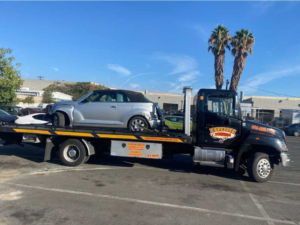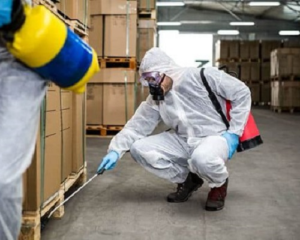Rodents like rats and mice contaminate food with rodent droppings and urine. They also chew electric wires and cause fires. Ants, cockroaches and flying insects carry bacteria such as salmonella, staphylococcus and shigella that can contaminate food.
Physical and mechanical control includes traps, screens, barriers and fences. Changing the environment by limiting food, water and shelter can reduce pest populations. Biological control uses predators, parasites and sterilisation programmes. Contact Bakersfield Pest Control now!

Preventing pest infestations is the goal of most pest control methods. This entails foreseeing potential problems and taking action to reduce the likelihood of their occurring, such as sealing entry points and maintaining clean environments. This can be done through routine inspections and maintenance tasks, including caulking cracks, fixing leaky pipes, and removing food sources and places for pests to hide.
Integrated Pest Management (IPM) is a preventive approach to pest control that seeks to minimize the need for pesticide applications. This is achieved by addressing conditions that favor pests, such as providing food and water sources and shelter, and eliminating or modifying habitat.
Physical Traps, netting and decoys are examples of physical pest control strategies. These can be used to capture and eliminate pests, or they may simply act as barriers that discourage their presence by creating a hostile environment. They can be more difficult to use than chemical solutions, and they often require repeated trips to trap or remove pests from a site. They also often expose people to toxic chemicals that can pose health threats, depending on how long and how much they are exposed to.
Chemical solutions include repellents, which are used to keep pests away, and insecticides, which are used to kill them. While they offer a quick response to problem pests, they can also harm people and the environment when used incorrectly or in excess. They can also be more disruptive to the ecosystem as they often affect a larger area than other control methods.
Natural Forces
Pest populations are affected by a number of factors, such as climate, the presence of natural enemies, the availability of food and water and the ability to escape from an environment. While these forces cannot be controlled, they can be leveraged to help mitigate pest invasions.
Prevention of pest invasions requires an understanding of a pest’s life cycle, their habits, and the conditions that support them. For example, a certain species of birds is a nuisance to many buildings because of their droppings and nesting activities. Preventing bird infestations can be accomplished by removing food, water and nesting materials from the building and surrounding area. It can also be helped by repairing eaves and roofs, installing screens on doors and windows, reducing the amount of vegetation around the building, and using bird feeders and deterrents to limit access.
Suppression
If pests do invade, it is often possible to keep them at bay by making the environment less hospitable. The first step is to remove the food and shelter they seek, such as a source of crumbs or an area where they can hide. Cleaning storage areas, keeping trash cans closed, and storing foods in sealed containers can help prevent pests from entering homes and businesses. Keeping windows and doors shut and repairing cracks, crevices, and holes can also limit the entry of pests.
Another step is to use a pest’s natural enemies against it, such as predators, parasites, or pathogens. This method is often referred to as biological control and can be effective when used in combination with other methods of pest management. Examples of biological control agents include beneficial mites that feed on mite pests in orchards, nematodes that kill harmful soil grubs, and wasps that parasitize greenhouse whiteflies.
In order to use biological controls, it is important to know what natural enemies are available and what the pest’s life cycle looks like. It is also important to have a plan for releasing the enemy organisms and to understand their impact on both the pest population and the surrounding environment.
The goal of pest control is to manage pests at an acceptable level of harm without causing unacceptable levels of harm to non-target organisms, such as crops, ecosystems, or property values. There are several ways to achieve this goal, including prevention, suppression, and eradication of a pest.
Prevention is the most cost-effective way to deal with a pest problem. Using a vacuum cleaner, a bucket, and a sponge to wipe down surfaces can eliminate sticky residues that attract pests. Taking out the garbage regularly, storing food in the refrigerator, and fixing leaky pipes can also reduce pests in your home or business. Sealing cracks and openings in walls, ceilings, and floors can help limit the entry of pests, as can putting drain covers on sink and tub drains. Lastly, removing standing water sources from the yard can prevent pests that thrive in moist environments, such as mosquitoes.
Treatment
Although building occupants and maintenance crews usually take great care to keep buildings clean and sanitary, pest infestations can still occur. A pest is any organism that causes damage, disrupts normal operations, or threatens the health or safety of occupants. Pests may transmit disease, spoil food or destroy property, and they can be a nuisance that is difficult to live with.
Identifying the pests and the extent of the problem is the first step in controlling them. Different pests require specific treatment methods. For example, cockroaches and termites can be controlled using traps or baits while rat infestations must be addressed with a combination of trapping and poisoning.
The next step in controlling pests is eliminating the factors that attract them to a building. This might mean installing fly screens in kitchen windows, putting out bird feeders to discourage pigeons or geese, or sealing and caulking cracks that mice and other rodents can use to enter a house or apartment. Using natural pest deterrents, such as nematodes or pheromones, can also be effective.
Once these preventive measures are taken, treatments can be used to eradicate pests that have already gained a foothold in a building. Treatments vary depending on the pest, but can include insecticide sprays, traps, bait stations, and chemical fumigation. Pest control professionals will carefully choose and apply these products to avoid unnecessary exposure to humans and other non-target organisms. They will also follow all product labels and ensure that any unused materials are properly stored to protect children and pets from accidental ingestion or contact.
When pests are found in a home or apartment, they should be eliminated as quickly as possible to prevent the spread of disease. In general, it is easier and more cost-effective to prevent pests than to treat an infestation after it has occurred. Encourage customers to be proactive and tell them when a simple step like sealing a crack will make a big difference in preventing future pest problems. This approach can be especially important in enclosed environments where preventive strategies are less feasible than in open or rural areas.
Monitoring
During pest control, it is necessary to monitor the activity of a pest and how much damage it has done. This allows the trained pest management employee to determine whether control tactics are working or need to be altered, as well as developing site history information for anticipating future problems. Monitoring is a vital part of integrated pest management (IPM) and is the key to effective prevention, suppression, and eradication.
When it comes to monitoring, there are a variety of methods that can be employed. The most common are visual inspections, trapping and counting. These methods can be very simple and inexpensive or sophisticated and high-tech, depending on the pest and situation. Visual inspections can include a walk-through the facility, looking at plants and other potential hiding places for pests, and using hand-held magnifying glasses to more clearly see insects on leaves or stems. Traps can be very passive or very active, using a pitfall, sticky or pheromone attractant. Passive traps usually require a pre-determined number of sweeps of a net over plant surfaces to be effective, while more active methods use attraction techniques such as light, scent or food bait to capture the pests.
Counting is one of the most common methods for monitoring, but it can be inaccurate if the traps or other monitors are not placed in the proper locations or are prone to error. Depending on the problem, it may be more important to measure infestation levels than to simply count numbers of pests. Some examples of measurement include population density per square foot or hectare, percentage of infested plants, or damage level thresholds.
Thresholds can be difficult to establish because pest populations change dramatically depending on the environment and crop conditions. A good estimate of a threshold can be obtained by comparing the current population to an average over a large area, or by taking into account other factors that influence the pest’s behavior such as environmental stresses, beneficial organisms and weather conditions.
A regional sampling system for pests called Plant Health Bulletins (PHBs) provides farmers and their advisers with weekly updates of the dynamics of regulated pests and estimates damage thresholds, without direct reference to treatments. However, guidelines are needed to optimize the implementation of this system and to improve the consistency and accuracy of regional field sampling procedures.



